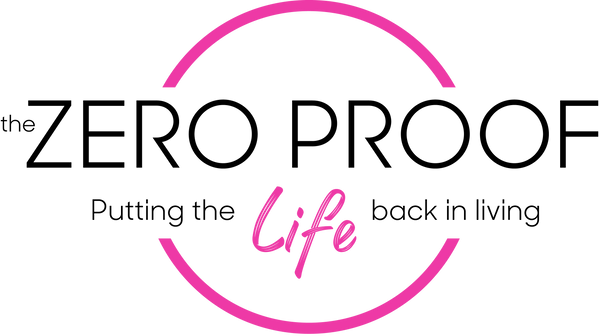Listen to Episode 01 of The Zero Proof Life Podcast
Ask ten people what the word alcoholic means and you’ll hear ten wildly different stories—shame, hopelessness, brown-bag stereotypes. Yet the National Institute on Alcohol Abuse and Alcoholism defines Alcohol Use Disorder (AUD) as a medical spectrum that ranges from mild to severe and affects nearly 29 million U.S. adults. niaaa.nih.gov
Language shapes whether those adults seek help or hide.
1. The Problem With One-Word Labels
“I cannot stand the term alcoholic. How is it serving you?” – Karla
The word isn’t clinical; it’s cultural—and often weaponized. Studies show stigmatizing words like alcoholic or addict increase blame and reduce the likelihood that healthcare providers offer evidence-based treatment. magazine.medlineplus.gov
2. Alcohol Use Disorder: A Brain-Based Spectrum
AUD is diagnosed via 11 DSM-5 criteria (craving, tolerance, time spent drinking, etc.). Severity is counted, not assumed, which means:
|
Mild (2–3 criteria) |
Moderate (4–5) |
Severe (6+) |
|
May respond to brief coaching, moderation tools |
Often benefits from therapy + medication |
Typically needs multi-modal care, support groups, or inpatient |
Framing alcohol problems as a treatable health condition removes moral judgment and widens recovery options.
3. How Labels Block (or Build) Honest Conversation
- With Doctors → “How many drinks per week?” lands differently than “Are you an alcoholic?”
- With Kids → Teaching that alcohol is a drug—not a rite of passage—equips them to decide, not defer.
-
With Self → Swapping “I’m broken” for “I have a disorder, and disorders are treatable” sparks action.
4. Multiple Pathways to Freedom
Karla celebrates every evidence-backed route:
- 12-Step programs (AA, Celebrate Recovery)
- Cognitive-behavioral therapy & medication (naltrexone, acamprosate)
- Somatic coaching & mindfulness (ZPL tools)
-
Digital communities & tele-health
Choose the combo that fits your biology, beliefs, and schedule.
5. Teaching the Next Generation
Kids often learn about alcohol from memes before middle school. Karla suggests:
- Age-appropriate facts: Brain development isn’t finished until ~25.
- Culture check: Point out ads portraying alcohol as a cure-all.
-
Modeling choices: Show that parties, promotions, and parenting can thrive alcohol-free.
6. What To Say Instead
|
Instead of… |
Try this… |
Why it helps |
|
“She’s an alcoholic.” |
“She’s living with Alcohol Use Disorder.” |
Person-first language reduces blame. nida.nih.gov |
|
“Dry January fad.” |
“A 30-day alcohol-free experiment.” |
Curiosity invites less pushback. |
|
“Relapse.” |
“Return to use.” |
Keeps the focus on behavior, not identity. |
Three Take-Home Actions
-
Audit Your Words
Replace “alcoholic,” “addict,” and “drunk” with person-first terms for one week -
Upgrade Your Questions
Ask friends “How do you feel about your relationship with alcohol?”—open, not binary. -
Find Your Community
Peer support triples success rates compared to going solo.
Ready for a Judgment-Free Zone That Speaks Your Language?
Join the Zero Proof Life Community ✨
- Weekly live coaching with Karla, Brandi, Carolyn & Becca
- Somatic practices & science-backed resources
- Private forum for daily wins and tough-day SOS
-
Monthly workshops on parenting, mindset, and more
Follow & Connect
Follow ZPL
https://www.instagram.com/thezeroprooflife/
Follow the coaches
- Brandi Babb – @littlebigleap (https://www.instagram.com/littlebigleap/)
- Karla Adkins – @karlakadkins (https://www.instagram.com/karlakadkins/)
- Carolyn Bennett – @thesoberempath (https://www.instagram.com/carolynbennett2.0/)
-
Becca Snider – @becsnider (https://www.instagram.com/becsnider/)

